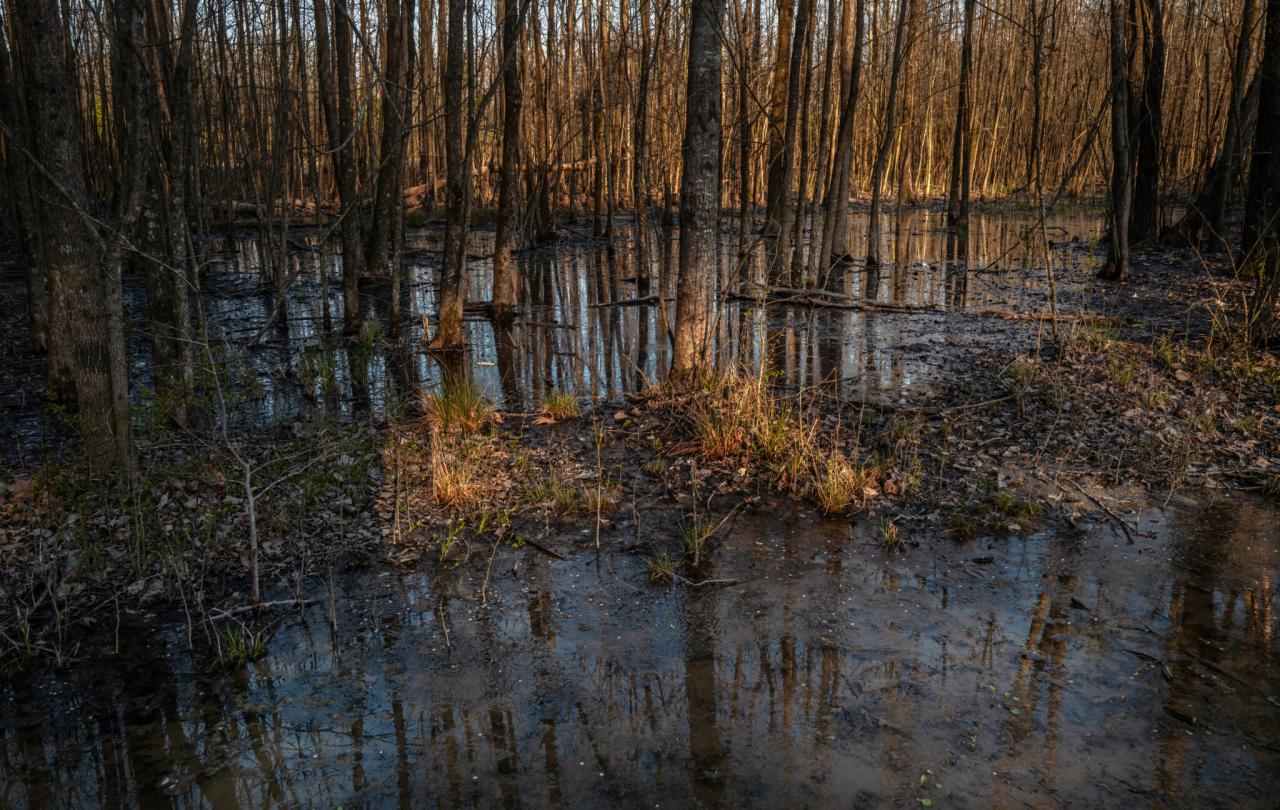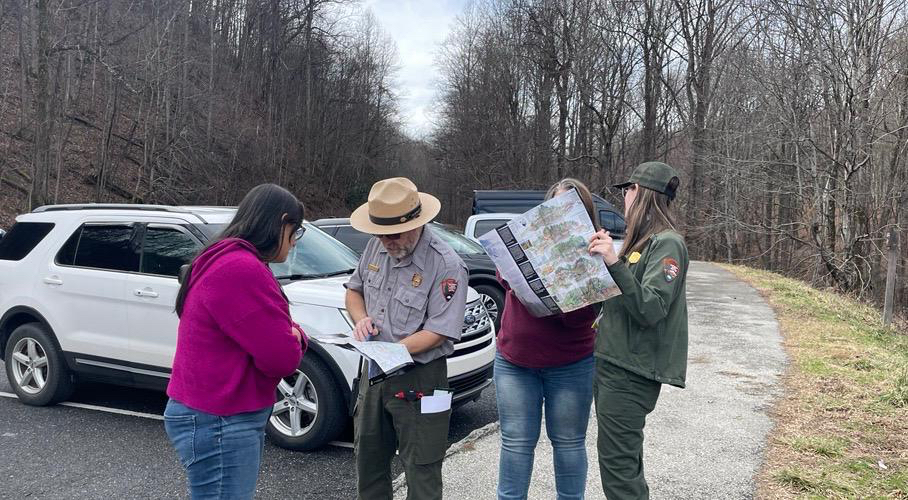News (799)
Children categories
ES! Initiatives (74)
EarthSolidarity!™ Initiatives are endeavors to which anyone can contribute in deed as well as in spirit, that
- minimize waste and environmental impacts
- increase community resilience
- respect and protect ecosystem processes and all forms of life
- contribute to good living conditions for everyone around the globe
- affirm and celebrate our interdependence and interrelatedness in the Web of Life!
TWRA bans booze in management areas to combat trail-riding crashes

NASHVILLE — Alcohol possession and consumption will be prohibited on Tennessee Wildlife Resources Agency (TWRA) Wildlife Management Areas statewide, effective April 15 with the exception of designated areas. Alcohol is only permitted at designated TWRA campgrounds and on public waters bordering or within a WMA. Drunken-disorderly conduct is also prohibited.
This rule applies to all user groups, including hunters, hikers, off-highway (OHV) drivers and passengers, and other WMA users. Signs will be posted on the WMA noting that alcohol is prohibited. TWRA wildlife officers will be issuing citations for alcohol possession and use that is not in compliance with the regulations. Tennessee State Driving Under the Influence laws also apply on local roads and managed trails when operating OHVs.
The rule change is being implemented due to high rates of intoxicated trail riding on WMAs and frequent accidents where alcohol was a contributing factor. The TWRA is committed to public safety and is focused on keeping public lands family friendly and safe for all Tennesseans.
— TWRA
Momentum builds slowly for TVA’s post-coal plans
Written by Ben Pounds Supercomputer simulation of plasma turbulence in a spherical tokamak, which is an experimental machine designed to harness the energy of fusion. Image courtesy of Walter Guttenfelder, Princeton Plasma Physics Laboratory and Filippo Scotti, Lawrence Livermore National Laboratory via DOE.
Supercomputer simulation of plasma turbulence in a spherical tokamak, which is an experimental machine designed to harness the energy of fusion. Image courtesy of Walter Guttenfelder, Princeton Plasma Physics Laboratory and Filippo Scotti, Lawrence Livermore National Laboratory via DOE.
Fusion research, natural gas, solar power and battery improvements at heart of TVA’s plans to wean itself off coal
OAK RIDGE — The Tennessee Valley Authority is phasing out coal and announcing developments tied to other energy sources at two plants that sit on either side of Oak Ridge.
One of the options includes a fusion test site. Scientists have long pursued fusion energy, though the technology remains in infancy and has yet to generate electricity anywhere.
The TVA coal plant on Edgemoor Road in the Claxton community in Anderson County closed Dec. 1 last year. TVA remains uncommitted to any plans for most of the land around the plant. A company recently announced, however, that it plans tests connected to fusion power in a small part of one of Bull Run’s old buildings by 2028. It will be an experiment and not generate power directly.
Meanwhile, TVA plans to retire Kingston Fossil Plant on Swan Pond Road in Harriman by the end of 2027. Its nine coal-fired units power about 818,000 homes. To replace the power generated at the plant, TVA plans to build a new complex at the Kingston plant’s site, combining natural gas, solar power and battery storage.
TVA plans to retire all its coal plants by the 2030s.
Ginseng: The root that helped shape a region
Written by Carolina Norman
An interview about ginseng with expert and author Luke Manget
This story was originally published by Appalachian Voices.
An author and historian who traveled across Appalachia examining business records of pharmaceutical companies, mountain entrepreneurs and country stores, Luke Manget’s book, Ginseng Diggers: A History of Root and Herb Gathering in Appalachia, unearths the complex and impactful history of ginseng and root digging. Manget delves into the relationship between a valuable root and a region’s cultural identity, transition to capitalism, and land use. The book was published by the University Press of Kentucky in March 2022.
The Appalachian Voice: Can you tell me a little bit about your background and what drew you to the history of ginseng?
Manget: My family on my mother’s side is from Eastern Kentucky and I grew up visiting family a lot. I grew up hearing some of these stories and my grandmother talked about digging mayapple behind the house. I was always kind of fascinated with it. When I was in graduate school for history and looking for topics to write about, I started looking into how the Appalachian region recovered from the Civil War in the late 19th century period and kept seeing references to root digging and ginseng. I immediately became fascinated by this idea and wanted to know more about it. It was a family connection, but it was also part of my desire to figure out subsistence practices in Appalachia and how they were altered and how they were changed by the Civil War.
Updated: Missing man found near Tremont in Smokies

GATLINBURG — A missing man who was the subject of a search in Great Smoky Mountains National Park was found on Wednesday.
Jacob Riggs was located in the vicinity of Tremont by a park visitor who recognized that he was in need of care. The visitor brought Riggs to the Incident Command Post near the Townsend Wye. Riggs had minor injuries and exposure to weather. He was evaluated onsite and taken to a local hospital.
The previous story is below:
Park rangers are searching for a 35-year-old man near the Townsend Wye, Tremont and Cades Cove areas of the park. Jacob Riggs was last seen in Maynardville, Tenn. on April 7. His vehicle was found in the park on April 8.
Riggs is a white male, with black hair and a dark beard, and brown eyes. He is 6 feet 2 inches tall and weighs 185 pounds.
Researchers use environmental justice questions to reveal geographic biases in ChatGPT
Written by David Fleming A U.S. map shows counties where residents could (blue) or could not (pink) receive local-specific information about environmental justice issues. Photo courtesy of Junghwan Kim via Virginia Tech.
A U.S. map shows counties where residents could (blue) or could not (pink) receive local-specific information about environmental justice issues. Photo courtesy of Junghwan Kim via Virginia Tech.
Key findings indicate limitations of AI, suggest improvements
David Fleming is a communications specialist at Virginia Tech.
BLACKSBURG — Virginia Tech researchers have discovered limitations in ChatGPT’s capacity to provide location-specific information about environmental justice issues. Their findings, published in the journal Telematics and Informatics, suggest the potential for geographic biases existing in current generative artificial intelligence (AI) models.
ChatGPT is a large-language model developed by OpenAI Inc., an artificial intelligence research organization. ChatGPT is designed to understand questions and generate text responses based on requests from users. The technology has a wide range of applications from content creation and information gathering to data analysis and language translation.
A county-by-county overview
“As a geographer and geospatial data scientist, generative AI is a tool with powerful potential,” said Assistant Professor Junghwan Kim of the College of Natural Resources and Environment. “At the same time, we need to investigate the limitations of the technology to ensure that future developers recognize the possibilities of biases. That was the driving motivation of this research.”
Utilizing a list of the 3,108 counties in the contiguous United States, the research group asked the ChatGPT interface to answer a prompt asking about the environmental justice issues in each county. The researchers selected environmental justice as a topic to expand the range of questions typically used to test the performance of generative AI tools. Asking questions by county allowed the researchers to measure ChatGPT responses against sociodemographic considerations such as population density and median household income.
Observe, upload and preserve during the City Nature Challenge
Written by Thomas Fraser
KNOXVILLE — People across 13 counties in East Tennessee are urged to record animals, plants and fungi they observe for four days in late April.
City Nature Challenge 2024 is international, but the Knoxville-area challenge includes anyone in Anderson, Blount, Campbell, Claiborne, Grainger, Jefferson, Knox, Loudon, Morgan, Roane, Scott, Sevier and Union counties. It will run April 26 through April 29 via the iNaturalist app, which is available on Google play or the App Store. While the focus is largely centered on urban areas, participants don’t have to live within a city or town to record their observations.
Participants can upload photos from a digital camera to the iNaturalist website even if they lack a smartphone. Zoo Knoxville, Tennessee Butterfly Monitoring Challenge, the city of Knoxville, Ijams Nature Center, Sierra Club, South Doyle Middle School and Discover Life in America are partnering to support the project. No experience is needed to participate. Results will be announced on May 6.
View the partial eclipse in the Park
 The central, dark image shows the total eclipse on March 9, 2016 from Earth, with the central pupil created by the sun covered by a dark moon as seen from the NASA and ESA Solar and Heliospheric Observatory. Faint structures in the sun’s corona extend outward from this disk with the corona imaged in white light, easily visible from the ground only during an eclipse. NASA
The central, dark image shows the total eclipse on March 9, 2016 from Earth, with the central pupil created by the sun covered by a dark moon as seen from the NASA and ESA Solar and Heliospheric Observatory. Faint structures in the sun’s corona extend outward from this disk with the corona imaged in white light, easily visible from the ground only during an eclipse. NASA
GATLINBURG — A total solar eclipse will be visible across a swath of the United States on April 8, stretching from Texas to Maine. Great Smoky Mountains National Park lies outside the path of totality but will experience an 86 to 87 percent obstruction of the sun during the event.
In the Smokies, viewers will experience a partial eclipse, when the moon only partially blocks the sun. In the national park, the moon will begin its intersection of the sun’s orbit at 1:49 p.m., the obstruction will reach its maximum extent at 3:08 p.m., and the event will conclude at 4:23 p.m.
A total eclipse is lineup of the sun, the moon, and Earth. The moon will be directly between the sun and Earth, casting a shadow on Earth. A total eclipse occurs when the moon covers the entirety of the sun except for the corona, or sun’s atmosphere.
Viewing a solar eclipse without proper eye protection is dangerous and can result in long-term vision impairment or blindness. Regular sunglasses — no matter how dark — are not safe for viewing the eclipse. To ensure safe viewing, park staff will make available one free pair of glasses per family/group at the viewing locations listed below while supplies last. If visitors wish to have enough glasses for everyone in their group to view the eclipse at the same time, they will need to bring eclipse glasses along or purchase them. The park’s retail partner, Smokies Life, will have the glasses available for sale ($1.50 each) at park store locations.
Park staff and volunteers will be available to provide eclipse information and safe, facilitated viewing at the following locations from 1 p.m. to 4:30 p.m.:
-
Newfound Gap parking lot
-
Various locations around Cades Cove Loop Road, including near the John Oliver Cabin and at the Cades Cove Overlook
-
Outside the Oconaluftee Visitor Center
Rock on: Penguins begin nesting at Tennessee Aquarium
Written by Doug Strickland Gentoo penguin Carla selects a rock for her nest during “Rock Day,” which begins penguin nesting season at the Tennessee Aquarium. Photo courtesy Tennessee Aquarium
Gentoo penguin Carla selects a rock for her nest during “Rock Day,” which begins penguin nesting season at the Tennessee Aquarium. Photo courtesy Tennessee Aquarium
Penguins swing into spring nesting season — with lots of rocks
Doug Strickland is a communications specialist at the Tennessee Aquarium.
CHATTANOOGA — While other birds’ hearts might flutter at the thought of building nests with supple twigs, fluffy fibers, mud or even their own saliva (yes, really), nothing gets the Tennessee Aquarium’s penguins quite as excited as rocks.
Big rocks. Little rocks. Smooth rocks. Rough rocks. Whatever type of rock a bird prefers, their arrival by the bucketful in the Penguins’ Rock gallery signals the official start of penguin nesting season and a flurry of activity that may — flippers crossed — lead to one or more tiny, fluffy chicks this summer. The birds typically begin nesting around April 1.
“These guys have been ready for a couple of weeks as the lights are gradually changing, and the days are getting a little bit longer, so they’ve known that this was coming,” says Assistant Curator Loribeth Lee.
Those steadily lengthening days, courtesy of the Aquarium’s team of systems operators, herald the arrival of spring and trigger biological signals telling the penguins that love is in the air. Nevertheless, it isn’t until the rocks are dumped into inviting piles& that the Gentoo and Macaroni Penguins can get to work building the nests that will help protect their young.
Be comfortably adventurous with the 2024 Eco-Adventure

The 4th annual Great Smokies Eco-Adventure, based at Camp Atagahi, promises you a unique, memorable experience
The event is hosted by Discover Life in America (DLiA) and A Walk in the Woods Guide Service. This exciting fundraising event features “glamping” (glamorous camping), gourmet food and drink, as well as guided nature hikes in the Smokies — including an excursion on the Appalachian Trail in Great Smoky Mountains National Park, during peak wildflower season.
The Eco-Adventure will be held Sunday, April 21-23 near Gatlinburg, and all proceeds support DLiA’s mission to conduct biodiversity research in Great Smoky Mountains National Park. Tickets are limited.
Discover Life in America’s mission is connecting communities and scientists in discovering, understanding and conserving the natural world. DLiA’s flagship project, the ATBI (All Taxa Biodiversity Inventory), is a joint effort with the National Park Service to identify and understand every species within Great Smoky Mountains National Park. To date, DLiA has helped add 12,083 species to the inventory of life in the park, including 1,079 that are new to science. Learn more at dlia.org.
Knoxville’s new alternative transportation leader will start with traffic calming
 Cody Gentry
Cody Gentry
KNOXVILLE — Transportation Engineering Specialist Cody Gentry is the city’s first Vision Zero coordinator.
As the city’s first Vision Zero coordinator, Gentry will oversee efforts by multiple city departments and community groups, including Bike Walk Knoxville, to improve roadway safety and meet the Vision Zero goal, which City Council unanimously endorsed in 2021.
Gentry has worked in the city’s engineering department for 17 years, most recently as a key member of the Neighborhood Transportation Safety Program. The neighborhood-driven program seeks solutions to vehicle speed and traffic safety concerns on residential streets.
“I’m eager for Cody to lend his significant experience to our Vision Zero efforts and find multi-modal solutions to road safety across Knoxville,” said Mayor Indya Kincannon. “We must work together across multiple city departments and community groups in order to reach our goal of ending deadly crashes by 2040. Cody is the person to bring those components together.”
Plans taking shape to prod people from Smokies to other area natural treasures
Written by Ben Pounds
From Cataloochee to Cherohala: Officials pondering ways to spread the love
GATLINBURG — With ever more people crowding Great Smoky Mountains National Park, should the park and others encourage them to go somewhere else?
Enter “de-marketing:” A presentation at the 2024 Great Smoky Mountains Science Colloquium laid out a study examining ways to draw people away from Great Smoky Mountains National Park and toward the Cherohala Skyway. The colloquium, sponsored by Discover Life in America, can be found on YouTube along with other presentations from the day, ranging from elk to ozone’s effects on plants. Justin M. Beall gave the presentation on crowds and de-marketing and said he conducted the research while at North Carolina State University. His was the only social science presentation of the day.
“That doesn’t mean we want to stop people from getting outdoors,” Beall said. “It just involves trying to convince visitors, maybe on their next trip, to explore a less visited destination in order to reduce crowding in certain spots.” He called it “diversion de-marketing” and said it was better than other de-marketing strategies. Two such other de-marketing strategies — forcing people to make reservations or raising the prices — he said, might price out people who earn less money or could confuse and frustrate visitors.
Beall said his study involved giving brochures to people at Alum Cave and Laurel Falls trailheads and Clingmans Dome. One focused on nature opportunities at Cherohala Skyway; one focused on social media photo and video posting opportunities there; and a third was more “of a boring control” in its approach to promoting the Skyway. His team distributed 500 surveys, evenly divided by both site and type of brochure. He said he expected to be there for 10 days but the group finished it in a little more than three days.
That “is amazing from a social sciences perspective, but I think again it shows you during these peak visitation times, such as peak leaf season, how many visitors can actually be in the park at one time,” he said.
Smokies roads, trails affected by Smokies windstorm
GATLINBURG — Laurel Creek, Cherokee Orchard, Greenbrier and Upper Tremont roads and some sections of Foothills Parkway remained closed early Wednesday after a Tuesday storm packing 85 mph winds downed trees and damaged vehicles and structures across Great Smoky Mountains National Park. No injuries were reported.
The closures were still in effect as of 10:30 a.m. Wednesday, according to park officials. Newfound Gap Road is open. Current road closures are listed on the park website.
A National Weather Service wind advisory and high wind warning remained in effect until 2 p.m. Tuesday. Wind gusts peaked at 85 mph in the park between 2 and 3 a.m, according to the park service.
Sugarlands and Oconaluftee visitor centers are open. Visitors coming to the park today are encouraged to stop in a visitor center for updates on current conditions.
Bill to allow development on Tennessee wetlands advances in House; supporters cite property rights
Written by Anita Wadhwani Wetlands in Shelby Bottom in Nashville. Legislative efforts are underway to undermine state regulatory authority of the important ecosystems. John Partipilo
Wetlands in Shelby Bottom in Nashville. Legislative efforts are underway to undermine state regulatory authority of the important ecosystems. John Partipilo
West Tennessee legislation appears to be driven by powerful development interests
This article was originally published by Tennessee Lookout.
NASHVILLE — A controversial bill to claw back state regulations over thousands of acres of Tennessee wetlands advanced with no debate in a House committee, keeping the proposal alive even after it was shelved in the state senate. The bill is likely to be considered this week in another subcommittee.
The bill would give developers and landowners a break from needing state permission to build on or fill in wetlands that have no obvious surface connection to a river, lake or stream. Current law gives the Tennessee Department of Environment and Conservation, or TDEC, the power to approve or deny plans to disturb a wetland — and to require that developers pay often-costly mitigation fees if a project is allowed to go forward.
The bill’s sponsors, west Tennessee Republicans Rep. Kevin Vaughan and Sen. Brent Taylor, have called state rules onerous and an infringement on the rights of property owners.
 Methane emissions, such as those that emanate from this oil well on federal property, are being capped across federal land in the Southeast thanks to a Biden Administration grant. NPS
Methane emissions, such as those that emanate from this oil well on federal property, are being capped across federal land in the Southeast thanks to a Biden Administration grant. NPS
Even federally protected areas can be full of old oil and gas wells, and they may need plugging to avoid releasing gas into the air.
ONEIDA — Eric Bruseth of the National Park Service Geologic Resources Division gave a talk on this issue in Historic Rugby at the 2024 Science Meeting, March 13.
Two Tennessee National Park Service areas — Big South Fork National River and Recreation Area near Oneida, straddling the Kentucky state line, and Obed Wild and Scenic River near Wartburg — have over 300 oil and gas wells total throughout the parks. The wells are left over from a time before they were public land. The earliest go back to the 19th century. The danger, Bruseth said, comes from the methane these wells can continue to release.
“Methane as a greenhouse gas can be up to 80 times more potent than carbon dioxide as far as trapping heat in the atmosphere. So smaller sources can have a bigger impact,” Bruseth said.
Ijams and other volunteers pull, push to restore riverine beauty
Written by Ijams Nature Center Odd robotic forms were among the every-worldly items pulled by volunteers from the Tennessee River and its tributaries earlier this month. Courtesy Ijam’s Nature Center.
Odd robotic forms were among the every-worldly items pulled by volunteers from the Tennessee River and its tributaries earlier this month. Courtesy Ijam’s Nature Center.
Betty Boop recovered from drink during widespread river cleanup
KNOXVILLE – Rain didn’t stop 441 volunteers from cleaning up the community’s waterways during the 35th annual Ijams River Rescue on March 9.
They tackled trash at 31 sites in Knox and Blount counties, filling 1,097 bags with garbage weighing an estimated 21,958 pounds (10.48 tons). That doesn’t include the weight of 46 tires and large items such as household appliances, furniture and car parts.
Plastic and Styrofoam waste was common in all areas, but Ijams River Rescue volunteers found items such as a robot puppy, drug paraphernalia, an antique lounge chair, a full patio set, suitcase, Betty Boop doll and shoes, sofas, stove parts, traffic barrels, a car seat, sports gear, a “nice watch” and a $10 bill.
More...
‘Park it Forward’ and camping fees bring in $10m for Smokies
Written by GSMNP
Fees will support increased ranger presence, improved visitor experience and more
This article was provided by Great Smoky Mountains National Park.
GATLINBURG — In the first year since Great Smoky Mountains National Park launched the Park it Forward program, the park generated over $10 million in recreation fee revenue, which includes parking tag sales and camping fees. The park is using this money to improve visitor safety and increase park ranger presence, as well as repair, enhance and maintain public park facilities. The park’s second year of the parking tag program began this month.
“Our team at Great Smoky Mountains National Park is grateful for the support of our partners, our neighbors and the millions of visitors who are helping us take care of one of the country’s most visited national parks,” said Superintendent Cassius Cash. “We’re already using this funding to increase our search and rescue program, add parking spaces at Laurel Falls trailhead and we are in the process of hiring more than 25 new park rangers."
Updated: TWRA plans adjustments to hunting laws, seeks public input

WAVERLY — The Tennessee Wildlife Resources Agency will preview its recommendations for the 2024-25 hunting and trapping seasons at the Tennessee Fish and Wildlife Commission’s March 21-22 meeting at Buffalo Ridge Refuge in Humphreys County.
Thursday committee meetings begin at 1 p.m. while full commission session starts at 9 a.m. Friday.
Wildlife and Forestry Assistant Chief Wally Akins will share proposed changes to wildlife management areas and the furbearer season. Wildlife and Forestry Assistant Chief Mark McBride will follow with proposals for the “Take of Raptors for Falconry and Migratory Game Bird Seasons.” His presentation will conclude with big game harvest summaries and proposed season changes, including recommendations for the new deer and turkey management units and season dates.
The 2024-25 season setting comment period ended on January 15th. TWRA advises you to check its public comments page after the March commission meeting for a link to provide comments on the season recommendations presented at the meeting. The commission will vote on the proposed regulations at its April 18-19 meeting in Johnson City.
Update: You now have until April 12 to review and comment on the proposals.
Coal industry mea culpa was destined for a University of Tennessee dumpster. Now there’s a public records lawsuit.
Written by JJ Stambaugh
Coal industry acknowledged its contribution to climate change in 1966
KNOXVILLE — It began innocently enough.
A little over four years ago, an old trade journal was rescued en route to a dumpster by a professor from the University of Tennessee’s Department of Civil and Environmental Engineering.
Professor Chris Cherry had no reason to suspect the journal contained a powerhouse revelation — the coal industry had been aware since 1966 that burning fossil fuels would eventually trigger cataclysmic global warming and had subsequently engaged in a decades-long coverup to protect corporate profits.
Cherry’s surprise discovery soon became international news thanks to a story written by a fellow UT employee, Élan Young, that was picked up by Huffpost. (Young is a regular contributor to Hellbender Press).
- mining congress journal
- elan young
- tom deweese
- climategate
- huffington post
- tennessee public records act
- american policy center
- university of tennessee’s department of civil and environmental engineering
- professor chris cherry utk
- climate change
- coal industry
- coal ash cleanup
- coal mining
- coal smoke
- climate change appalachia
- james r garvey
- hellbender press
- hellbender press climate change
- coal
- coal industry trade publication
- jj stambaugh
- knoxville environmental journalism
- coal knew too
Knoxville hires new sustainability director to help clean up the city
Written by Paige M. Travis
New director comes from Nashville; decarbonization of city a central duty
Paige Travis is a public information specialist for the city of Knoxville.
KNOXVILLE — Mayor Indya Kincannon appointed Metro Nashville Decarbonization Manager Vasu Primlani as Knoxville’s next director of sustainability.
Primlani has more than three decades of experience in sustainability and has received awards for environmental innovation, including the EPA’s Environmental Achievement Award.
“Vasu has an incredible track record in this field,” Kincannon said. “Her experience and creative thinking will help Knoxville meet our goal of an 80 percent reduction in greenhouse gases by 2050.
“I am also impressed with her focus on equity. We must adapt to climate change in a way that is just, equitable, and helps everyday people and small business owners save money too.”
